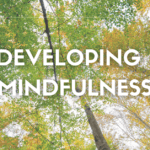
How you sit in Meditation is less important than you think
Lotus Pose is a well-known yoga pose and is almost always associated with meditation. It is how meditation looks on social media – almost every picture showing the same posture, when I look at these photos I think wow, that looks so easy and comfortable. Then I sit down and try it…….. yeah. Not gonna happen without injury.
But something else does happen when I fail to get into this posture. I feel inadequate, like somehow the posture is linked to my ability to meditate and I feel the urge to try and force it. (by the way, if you feel this too, please don’t force it, you could seriously injure yourself).
This way of sitting keeps the body somewhat active while in a rested posture, but it’s not the only way to achieve this state and is unattainable- at least at first for most people. I’m going to share with you 3 alternative ways of sitting for meditation, and then reveal which is the best one.
Meditation Posture #1
First up is the most accessible option, especially if you have hip or knee pain or mobility constraints – sit in a chair with your back straight, feet planted on the floor and hands on your thighs – hands can face up or down. If you don’t have a chair, you can also sit on a couch. The benefit of this option is that there is no stress placed on the knees, hips or ankles and if you want to have a quick meditation session when you’re in a place where you can’t sit on the floor, or it would be really strange if you did, you can very subtly just close your eyes without anyone the wiser.
Meditation Posture #2
Next up is a cross legged version where your hips are raised above your knees using a meditation cushion, or if you don’t have a meditation cushion you can use pillows, a small bench or a couch cushion. The idea is give yourself a supported platform to sit on that keeps the pressure off your knees by raising the height of your pelvis. If your knees are still feeling some pressure in this position, you can prop them up using blocks or pillows. This is a good option if you’re working towards being seated on the floor as it’s very adjustable to meet your needs.
Meditation Posture #3
The third option is sitting cross legged on floor, but with your feet placed one in front of the other instead of one underneath the ankle of another. The reason you don’t want your ankles underneath each other has to do with circulation. Depending on how long your meditation session is, over time the circulation to your foot can be constricted and your foot will fall asleep. I don’t know about you, but I don’t particularly enjoy the sensation of pins and needles that occurs once circulation has been restored. Avoid it altogether with this variation.
Which posture is the best?
The best one of these for your meditation practice, is the one you can sit in comfortably without circulation issues or pain for the duration of your meditation. If you’re aiming for Lotus pose – start with one of these and work your way up – your knees will thank you.













